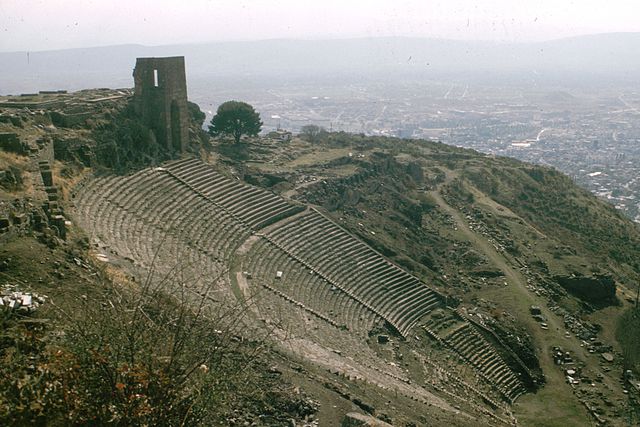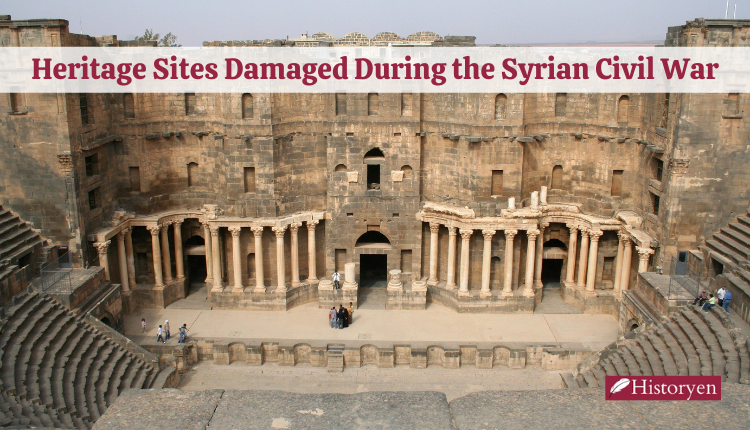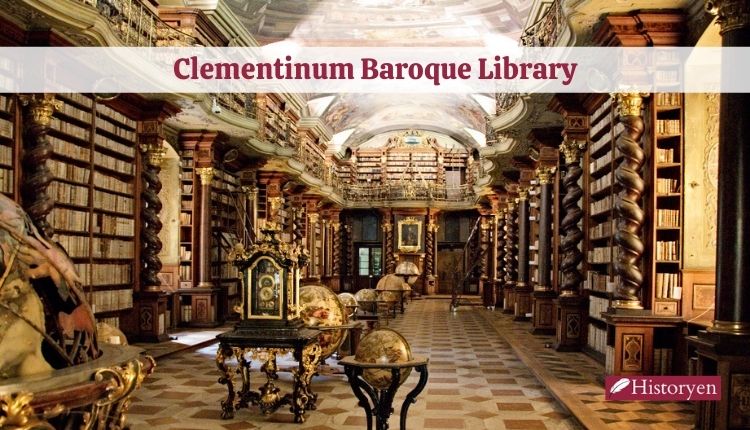The Theater of Pergamon, located in the ancient city of Pergamon (modern-day Bergama, Turkey), stands as a testament to the rich cultural heritage of the Hellenistic period. This magnificent amphitheater, known for its impressive architecture and historical significance, draws visitors from around the world. In this article, we will explore the fascinating history, design, and significance of the Theater of Pergamon, taking a closer look at its grandeur and the experiences it offers to its spectators.
Introduction
The Theater of Pergamon, also known as the Hellenistic Theater, was built during the reign of Eumenes II in the 3rd century BC. This ancient theater, perched on the hillside of the Acropolis, served as a gathering place for theatrical performances and cultural events. With its unique design and strategic location, the theater offered an exceptional experience to its spectators and played a vital role in the social and cultural life of Pergamon.
History of the Theater of Pergamon

The history of the Theater of Pergamon dates back to the 3rd century BC when it was built during the reign of Eumenes II, a prominent ruler of the Attalid dynasty. Eumenes II, known for his patronage of the arts and culture, played a significant role in the development and flourishing of the theater.
During this period, Pergamon was a thriving city in the Hellenistic world, known for its advancements in various fields, including architecture, sculpture, and theater. The construction of the Theater of Pergamon was part of a broader urban development plan aimed at enhancing the cultural landscape of the city.
The theater served as a gathering place for theatrical performances and cultural events, attracting renowned playwrights, actors, and spectators from far and wide. It became a center for artistic expression, intellectual discussions, and social gatherings, playing a vital role in the cultural and social fabric of Pergamon.
One notable event associated with the Theater of Pergamon was the Attalidai, a dramatic contest that took place annually. This contest showcased the talents of actors, playwrights, and musicians, drawing participants and spectators from across the Hellenistic world. The Attalidai contributed to the theater’s reputation as a hub of artistic excellence and cultural significance.
Over the centuries, the Theater of Pergamon witnessed various historical events and underwent periods of prosperity and decline. It suffered damage due to earthquakes, invasions, and human interventions. However, its architectural grandeur and historical importance continued to capture the imagination of people throughout the ages.
In recent times, extensive restoration efforts have been undertaken to preserve and showcase the theater’s magnificence. These endeavors have allowed visitors to experience the theater in a way that resembles its ancient glory. Today, the Theater of Pergamon stands as a testament to the rich history and artistic achievements of the Hellenistic period, attracting tourists and history enthusiasts from around the world.
In summary, the Theater of Pergamon holds a significant place in history as an ancient theater that flourished during the Hellenistic period. Built during the reign of Eumenes II, it played a vital role in the cultural and social life of Pergamon. Through its dramatic contests and cultural events, the theater showcased the artistic talents of its time. Despite the challenges it has faced over the centuries, restoration efforts have ensured its preservation, allowing present-day visitors to admire its architectural splendor and delve into its rich historical legacy.
Architectural Design and Features of Theater of Pergamon

The Theater of Pergamon is renowned for its impressive architectural design and features, showcasing the ingenuity and craftsmanship of the Hellenistic period. Let’s delve into the specifics:
- Semicircular Shape: The theater is built in a semicircular shape, following the typical design of ancient Greek and Roman theaters. This shape allowed for optimal viewing angles and acoustics, ensuring that the audience could see and hear the performances clearly from any seat.
- Tiered Seating: The theater features tiered seating, known as the koilon, which accommodated approximately 10,000 spectators. The seating area is divided into three sections: the lower section for the elite, the middle section for the affluent, and the upper section for the common people. This division of seating reflected the social hierarchy of the time.
- Orchestra: The orchestra is the circular area located in front of the stage. In the Theater of Pergamon, the orchestra is relatively small compared to other ancient theaters. It was primarily used for instrumental performances and as a space for the chorus during theatrical productions.
- Stage: The stage, known as the proskenion, is an essential element of the theater’s architectural design. It is a raised platform where actors performed and interacted with the audience. The proskenion of the Theater of Pergamon is adorned with ornate decorations, including columns, friezes, and statues, adding grandeur to the theatrical experience.
- Backdrop and Scenery: The stage of the theater had a backdrop that served as a visual representation of the setting for the performances. The backdrop could be changed to depict different scenes, enhancing the immersive nature of the theatrical experience. Additionally, movable scenery and props were used to further enhance the performances.
- Acoustics: The architects of the Theater of Pergamon paid special attention to its acoustics. The design of the seating and the overall structure of the theater were carefully crafted to amplify sound and ensure that it reached every corner of the audience area. This attention to acoustics allowed for clear and audible performances without the need for electronic amplification.
- Entrances and Exits: The theater had multiple entrances and exits to facilitate the movement of the audience and performers. These entrances were strategically positioned to ensure easy access and efficient crowd management during events.
The architectural design and features of the Theater of Pergamon created an immersive and visually captivating experience for the spectators. The combination of its semicircular shape, tiered seating, ornate stage, and attention to acoustics made it a remarkable venue for theatrical performances and cultural events. The theater’s design not only provided optimal viewing and listening experiences but also added to its aesthetic appeal, making it a magnificent structure that continues to awe visitors to this day.
The Spectator Experience of Theater of Pergamon

The Theater of Pergamon was designed to provide an exceptional experience for its spectators. Here are some key aspects that contributed to the immersive and captivating nature of the theater:
- Excellent Visibility: The semicircular design of the theater ensured that every seat had a clear view of the stage. The tiered seating, with its upward slope, allowed for unobstructed sightlines, enabling spectators to see the performances from different angles. This ensured that everyone in the audience had a chance to witness the action on stage without any visual hindrances.
- Impeccable Acoustics: The architects of the theater paid careful attention to its acoustics. The design of the seating and the positioning of the stage and orchestra area were carefully calibrated to enhance the projection and clarity of sound. As a result, even spectators sitting in the highest rows could hear the actors and musicians clearly, without the need for electronic amplification.
- Intimate Setting: Despite its large seating capacity, the Theater of Pergamon had a sense of intimacy that brought the spectators closer to the performances. The semicircular shape of the theater created a more intimate atmosphere compared to other open-air theaters. This intimacy allowed for a stronger connection between the performers and the audience, enhancing the emotional impact of the theatrical experience.
- Engaging Performances: The Theater of Pergamon hosted a wide range of performances, including tragedies, comedies, and musical productions. Renowned playwrights, actors, and musicians showcased their talent on the stage, captivating the audience with their performances. The skill and expertise of the performers, combined with the grandeur of the theater itself, created a mesmerizing and unforgettable experience for the spectators.
- Awe-inspiring Ambiance: The theater’s architectural splendor, with its ornate decorations and statues, contributed to the overall ambiance of grandeur and majesty. As spectators entered the theater, they were greeted by the impressive structure and the anticipation of the performances to come. The combination of the awe-inspiring setting, the energy of the crowd, and the anticipation of the theatrical spectacle created an electric atmosphere that heightened the spectator experience.
Attending a theatrical performance at the Theater of Pergamon was a truly immersive and unforgettable experience. The excellent visibility, impeccable acoustics, intimate setting, engaging performances, and awe-inspiring ambiance all worked together to transport spectators to another world, where they could become fully absorbed in the drama, comedy, and tragedy unfolding on the stage. The theater’s design and atmosphere ensured that each spectator felt connected to the performances and left with lasting memories of the artistic brilliance they witnessed.
Significance and Cultural Impact of Theater of Pergamon

The Theater of Pergamon played a crucial role in the cultural and intellectual development of the ancient city. It served as a hub for artistic expression and provided a platform for renowned playwrights and actors to showcase their talent. The theater’s influence extended beyond Pergamon, contributing to the wider Hellenistic cultural landscape. It served as a center for philosophical discussions, political debates, and religious ceremonies, enriching the social fabric of the city.
Restoration and Preservation Efforts

Over the centuries, the Theater of Pergamon suffered damage due to natural disasters and human interventions. However, extensive restoration efforts have been undertaken to preserve its architectural splendor. These endeavors have ensured that visitors today can witness the theater’s grandeur in much the same way as its ancient spectators did. The restoration work allows us to appreciate the magnificence of the theater and gain insights into the cultural and historical significance it holds.
Conclusion
The Theater of Pergamon stands as a testament to the rich cultural heritage of the Hellenistic period. Its architectural brilliance, combined with its historical and cultural significance, makes it a must-visit destination for history enthusiasts and theater lovers alike. The theater’s grandeur and the immersive experience it offers transport visitors back in time, allowing them to appreciate the artistry and creativity of the ancient world.



